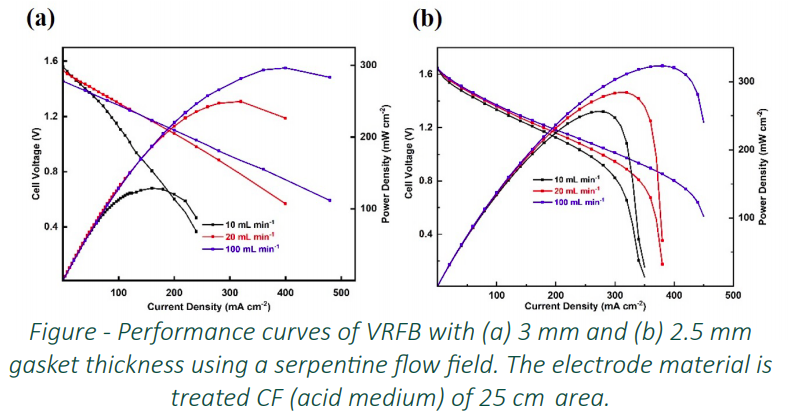


Redox flow battery (RBF) is one of the most efficient energy storage devices to fulfil the storage requirements of renewable energy technologies. Vanadium redox flow battery (VRFB) is superior among RFBs because of its scalability, flexibility, energy-power decoupling, along with low environmental impact.The electrode materials play a critical role in the performance of VRFB.The porous nature of the electrodes offers large specific area and optimum pore size. Compression of the electrode reduces the thickness, which decreases the porosity and its interaction with the vanadium ions. For that reason, the performance of VRFB not only depends on the surface area but also on the thickness of the electrode. As a result, it may be prudent to express all the performance parameters in terms of per unit volume (cm3 ), rather than the surface area (cm2 ) of the electrode. The figure illustrates the conventional characteristic performance curves obtained with a VRFB of 3.2 mm thick carbon felt, treated in acid medium, with serpentine flow field using two different thickness (3 and 2.5 mm) of the silicone gasket with 25 cm2 cell area.

It has been observed that there is not much difference in the power density obtained at a flow rate of 100 mL min-1 with 3 mm and 2.5 mm thickness of the gasket. However, performance with 2.5 mm thick gasket is better than that with 3 mm thick gasket at a lower flow rate (10 and 20 mL min-1). This observation suggests that 22 % compression of the 3.2 mm thick carbon felt electrode offers better performance than 6 % compression of the electrode. Under the guidance of Prof. Manoj Neergat, the future aim of the team is to develop a durable VRFB of optimum power output.
